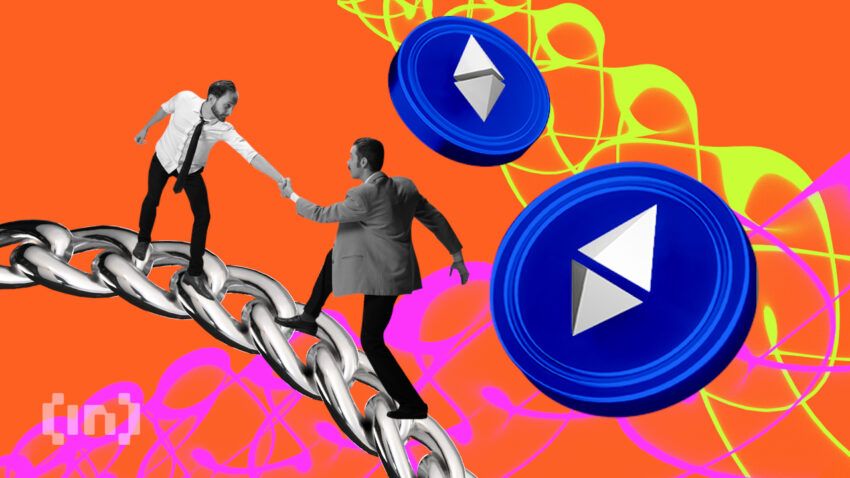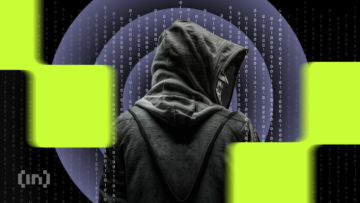The Ethereum Shanghai upgrade unlocked the indefinitely staked ETH from the Beacon Chain (the layer that helped Ethereum transition from proof-of-work to proof-of-stake). This guide will cover every element of the proposed changes associated with the Ethereum Shanghai Upgrade. Additionally, we cover the possible impact of this highly anticipated event on the broader crypto market, ETH prices, and the involved stakeholders.
KEY TAKEAWAYS
► The Shanghai upgrade allowed validators to withdraw their previously locked ETH and accrued rewards from the Beacon Chain.
► By implementing five key Ethereum Improvement Proposals (EIPs) the upgrade also aimed to lower network fees.
► EIPs like EIP-3855 and EIP-3860 were introduced to optimize transaction sizes and mitigate potential denial-of-service attack vectors.
► The upgrade laid the groundwork for upcoming scalability solutions, such as sharding, to further increase Ethereum’s performance.
- The Ethereum Shanghai upgrade explained
- What are the proposed changes?
- What’s with EIP-4895 and ETH withdrawals?
- Ethereum withdrawals
- Understanding the Ethereum Shanghai upgrade testnets
- The sentiments surrounding the withdrawal
- Where does the Ethereum Shanghai Upgrade fit on the road to ETH 2.0?
- Frequently asked questions
The Ethereum Shanghai upgrade explained
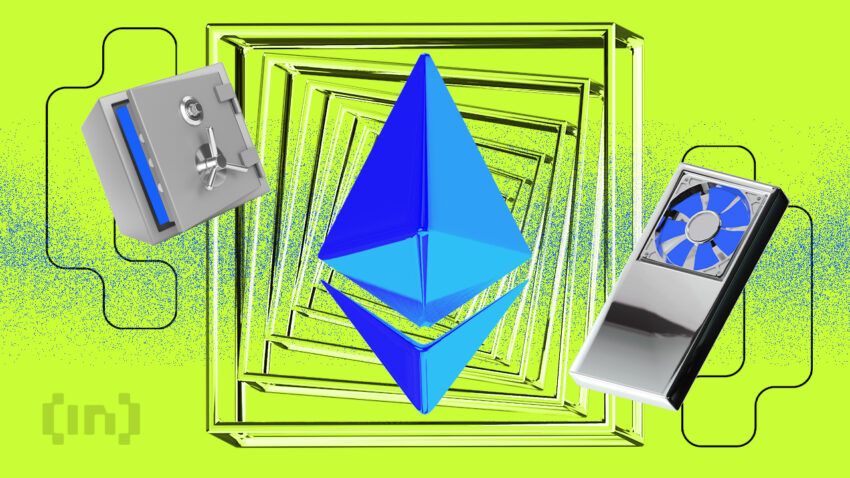
The Ethereum Shanghai upgrade is a hard fork that introduced several developments and network-specific improvements to Ethereum. ETH unstaking happened to be the most anticipated one.
Ethereum’s proof-of-work (PoW) to proof-of-stake (PoS) transition didn’t happen overnight. Instead, the foundation was laid in 2020 with the release of the Beacon Chain — the engine that would eventually power the new and better version of Ethereum.
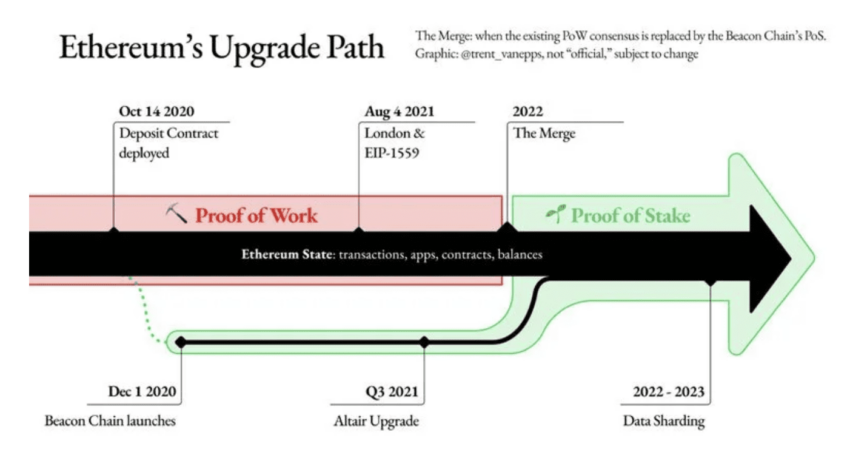
But the Beacon Chain needed ETH, and that is why participants started to stake their ETH to become a validator. The only rule was that to stake directly into the Beacon Chain, a minimum of 32 ETH was needed. And yes, staking rewards were promised. Yet, the staked ETH and the rewards weren’t eligible for withdrawal immediately after the merge.
Over time, several liquid staking providers like Lido Finance, Coinbase, and Rocketpool came into existence, allowing users to start staking with as little as 0.01 ETH. This paved the way for “liquid staking derivatives” — a receipt-like token that can also be used elsewhere to generate compounding yields.
Yet, the actual ETH would still be staked. When Ethereum finally merged in September 2022 (merging the mainnet with the Beacon Chain), users and network participants assumed the staked (locked) ETH would be released.
However, the Ethereum Foundation made it clear that withdrawals (staked ETH release) would only be possible after the Shanghai Upgrade. This made Shanghai a highly anticipated event.
BeInCrypto Trading Community in Telegram: read all the hottest news on crypto, watch Trading Basics course & get answers to all your questions from PRO traders & experts!
What are the proposed changes?
While much focus was on ETH withdrawals post the Ethereum Shanghai upgrade, other developments were also in the pipeline. However, to understand all of that, we need to look at the concept of EIP first.
EIPs are proposed improvements or changes made to the Ethereum blockchain (protocol). Each hard fork or a similar chain-defining event might comprise multiple EIPs. The Ethereum Shanghai upgrade consists of five such EIPs:
- EIP-3651: Reduction in Ethereum network fees
- EIP-3855: Reduction to the transaction size
- EIP-3860: Fix of a Denial-of-Service attack vector and capping gas fees
- EIP-4895: Allows validators to withdraw staked ETH
- EIP-6049: Capping and positive impact of transaction fees for Ethereum developers
As you can see, most EIPs, other than the EIP-4895, focus on reducing gas fees for Ethereum network users (EIP-3651) and even the Ethereum developers (EIP-3855, EIP-3860, and EIP-6049).
With the Ethereum network growing rapidly, such enhancements would greatly benefit the network and its users. However, in particular, the focus remains on EIP-4895.
What’s with EIP-4895 and ETH withdrawals?
In simple terms, the EIP-4895 released the staked ETH from the Beacon Chain (now a part of the mainnet). This EIP not only released the staked ETH but also the staking rewards that were accumulated. Even the liquid staking protocols benefitted, as they staked ETH on behalf of their clients.
But before we understand the withdrawals, it is necessary to track the state of staking. This will also help us understand the impact of the token release.
The ETH staking timeline
Before Dec. 1, 2022, it all started when willing network participants started staking their ETH to power the PoS Beacon chain. From late 2020 to February 2023, the number of validators grew steadily.

It is important to point out that one node operator can host multiple validators, depending on the stake added to the network. For clarity, staking 32 ETH will create a single validator. 64 ETH will create two validators, and so on. One node operator can create as many validators as their ETH holdings will allow.
On April 12, 2023, the Shanghai upgrade went live. The very first month of the upgrade saw withdrawals at an all-time high. The following months experienced an immediate drop-off in withdrawals, slowly picking back up going into the following year.
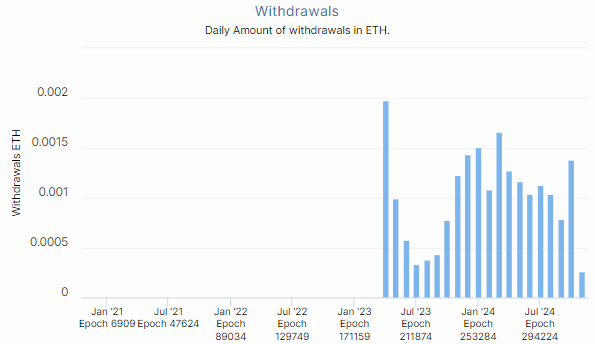
The chart below shows that a majority of the total stakers are unknown or not a part of any known staking pools. As of 2025, Lido Finance is the market leader in staking, with about 27% of the market share, down from about 30% pre-Shanghai.
Prior to the Shanghai upgrade, many people anticipated that stakers would execute withdrawals to stake with liquid staking providers, giving them a larger market share. While this was true for some time, in 2025 Lido reduced its market share voluntarily to reduce the possibility of breaking consensus.
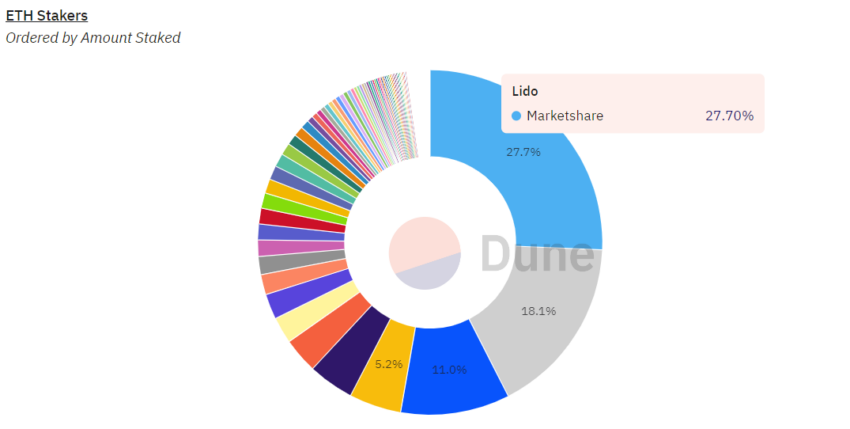
Ethereum withdrawals
Now that we have covered how Ethereum reacted to the Shanghai upgrade, let’s cover how the withdrawals actually work.
When partial
Any ETH accumulated above the standard validator limit of 32 ETH can be withdrawn. That way, the user still manages to be a validator. If you are planning to withdraw partially, the first step is to set a “Withdrawal Credential.” That would activate partial withdrawals on your account. And even then, the withdrawals won’t be immediate but phased — 1 sweep per week.
When full
This phenomenon strips off all the validator rights and triggers an exit. This way, you can withdraw every bit of your staking balance, including the rewards.
However, exits cannot be made at once. Considering the current rate limit, only seven validators can leave the network per epoch (the timespan of block formation is 30.000 blocks, keeping the current network traffic in mind).
As each epoch for Ethereum is currently 6.4 minutes, a total of 7 x (1440 minutes / 6.4 minutes) = 1,575 validators, max.
Hence, there can be a possible maximum selling pressure of 32 x 1575 = 50,400 ETH each day (approximate), considering each validator only has 32 ETH worth of “skin-in-the-game.”
Even though this is some insane selling pressure, the portion of validators out-of-money might not encourage sell-offs.
Understanding the Ethereum Shanghai upgrade testnets
After the merge, Ethereum ended up with a user-side execution layer and a backend-like consensus layer. The Shanghai upgrade is relevant to the execution or the client side, whereas the synonymous consensus version is called Capella.
To be precise, the Capella hard fork happens inside the chain, right at the Beacon Chain. Shanghai and Capella make Shapella.
However, this Shapella upgrade would first be tested and deployed onto the testnets to locate and mitigate bugs and roadblocks, if any. The process started when ETH withdrawals were tested on the “Zhejiang” public testnet close to Feb. 7, 2023. No issues were encountered.
On Feb. 28, 2023, the Sepolia testnet (made famous during the Merge) successfully transitioned to Shapella. The next step for the Shapella to be tested was on the Goerli testnet.
However, the preparation for the upgrade started in January with a successful “Shadow Fork” deployment. The Shandong testnet stands deprecated now as it contained EIPs focussed on EVM updates — a development that didn’t ship with the Shanghai upgrade.
The sentiments surrounding the withdrawal
Nothing about the Ethereum Shanghai upgrade is random. Kiln, a leader in “enterprise-grade staking,” conducted a survey to understand user sentiments and proclivities surrounding the hard fork. Despite a small sample size, the survey results painted a picture. Here is what we could infer:
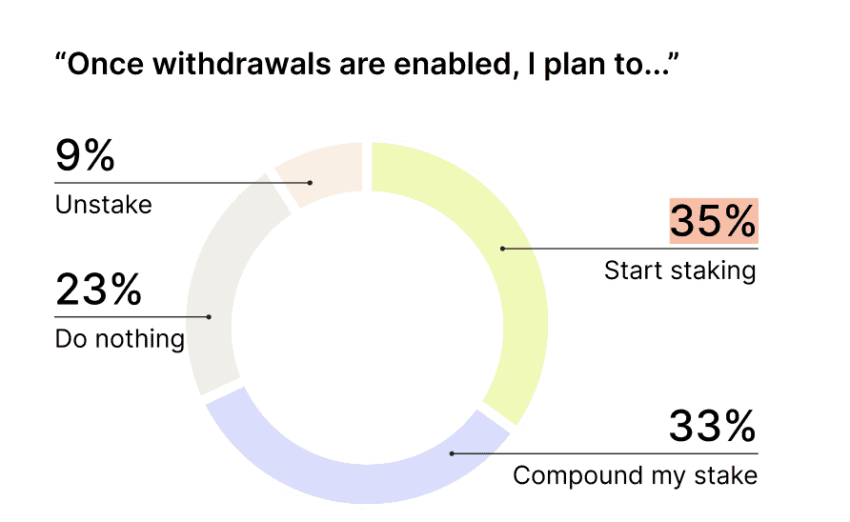
68% of the survey participants seem interested in staking or even compounding their stakes once the withdrawals are enabled. Also, 42% of those with staking and stake-compounding intentions would want to begin immediately.
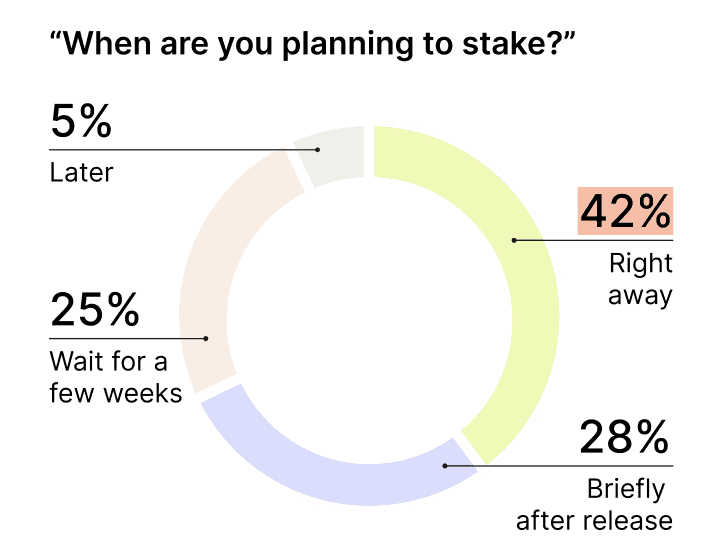
As for the folks interested in unstaking the ETH, 44.5% planned to do so immediately. However, a massive 66.7% of the unstaking evangelists (not just the immediate ones) were planning to withdraw less than 320 ETH. And this would again point away from a mass validator exodus.
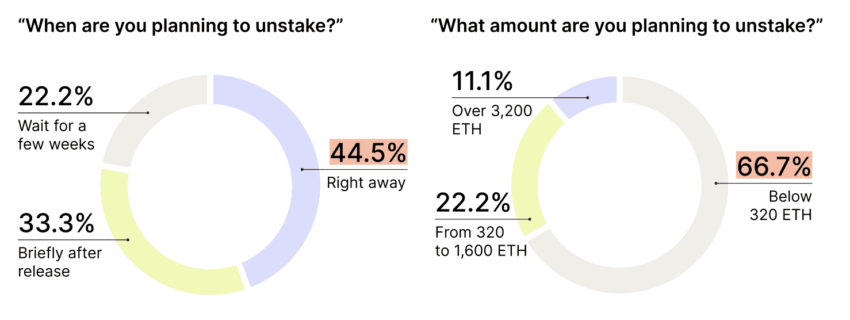
Do note that these figures also take liquid staking into consideration and might not be all aligned with the solo staking sentiments.
Where does the Ethereum Shanghai Upgrade fit on the road to ETH 2.0?
In July 2022, Vitalik Buterin said that Ethereum is only 55% complete post-merge. Yet, with the Ethereum Shanghai upgrade, the ecosystem received a major boost to move toward its completion. With the stakes opening up the ecosystem received more liquidity.
And even though withdrawals happened to be the focal point of the Ethereum Shanghai upgrade, there were several other smaller EIPs that targeted gas fee reduction. All of that prepares the Ethereum blockchain for the next stage — the Surge — with “sharding” as its core.
Frequently asked questions
When can I unstake Ethereum?
When is Shanghai ETH?
How long does it take to withdraw pledged ETH?
What is the Ethereum 2.0 upgrade?
What is the Ethereum Shanghai Upgrade?
Disclaimer
In line with the Trust Project guidelines, the educational content on this website is offered in good faith and for general information purposes only. BeInCrypto prioritizes providing high-quality information, taking the time to research and create informative content for readers. While partners may reward the company with commissions for placements in articles, these commissions do not influence the unbiased, honest, and helpful content creation process. Any action taken by the reader based on this information is strictly at their own risk. Please note that our Terms and Conditions, Privacy Policy, and Disclaimers have been updated.


